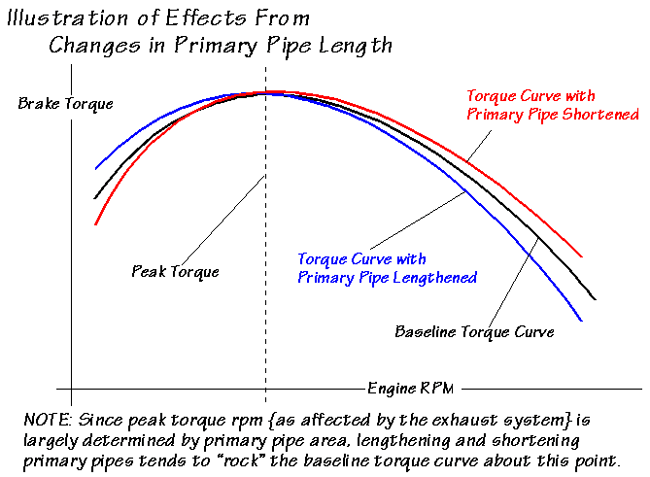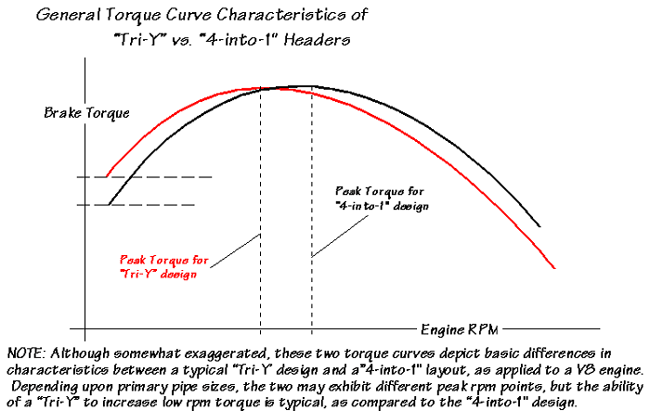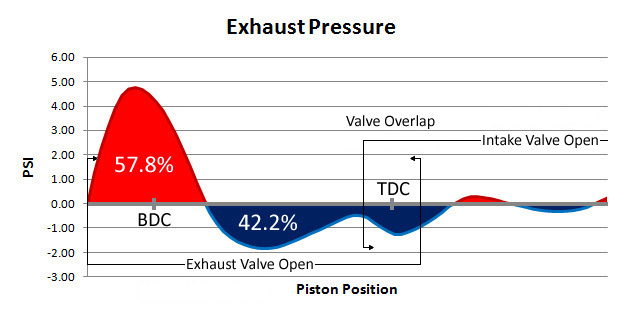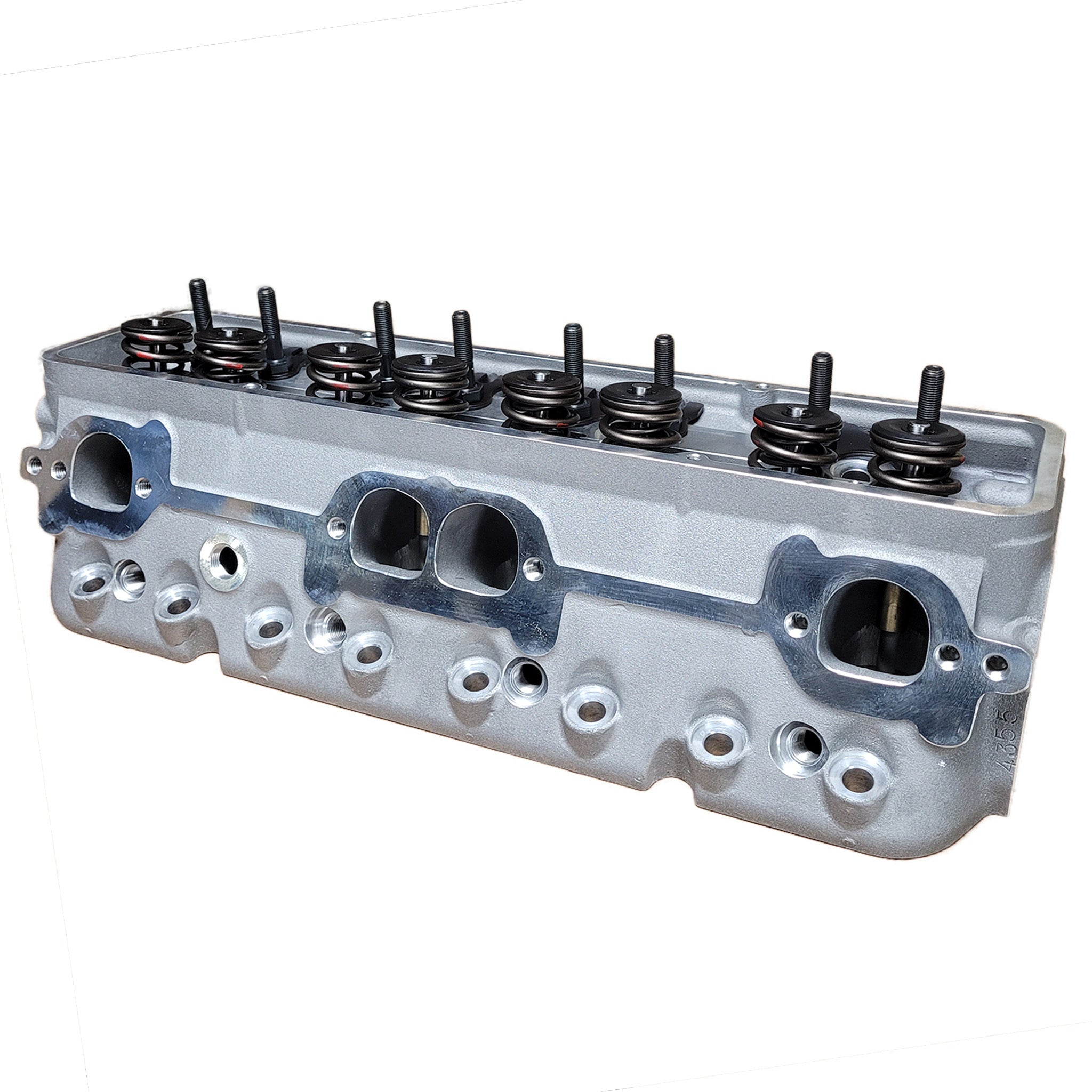http://www.purplesagetradingpost.com/su ... eads1.html
http://racingdownloads.com/racing_software-26.html
http://www.superchevy.com/how-to/engine ... omparison/
http://www.superchevy.com/how-to/83138- ... ock-heads/
http://www.strokerengine.com/SBCHeadsFlow.html
http://www.hotrod.com/articles/ccrp-1209-eight-budget-sbc-head-shootout/
http://www.hughesengines.com/TechArticl ... risons.php
http://users.erols.com/srweiss/tablehdc.htm
http://www.carcraft.com/techarticles/11 ... index.html
http://www.summitracing.com/parts/tfs-3 ... /overview/
http://www.summitracing.com/parts/tfs-3 ... structions
you are aware theres reasonably priced aluminum heads designed for a small bore sbc that out flow standard vortec heads, so don,t think those are automatically your best option.
look this is not a guessing game (selecting the correct port size, there are known guidelines )you select and verify the correct port size and cross sectional area, using know calculations, valve diam. and flow rate for the application, verify clearances in the valve train, intake runner length and cross sectional area and that the cam lift duration and LSA, and make sure the valve train components are compatible for the intended rpm band and stress levels,
you match the cams intended rpm and power band to the displacement and compression ratio, exhaust scavenging ,make sure the valve curtain area exceeds the port cross section slightly , select the cam lift and duration to maximize the port flow,potential, select headers designed to operate in the same power band, select a drive train that keeps the engine in that power band most of the time.
if you read thru the posted info I will agree that a great many cylinder heads get selected on the basis of posted flow numbers or price alone, and the fact is that the cam timing, intake design,operational rpm band, displacement ,compression ratio and exhaust scavenging all have a pronounced effect on how well the fuel and air flow thru a cylinder head port, and you don,t always get the best horse power by selecting the head with the highest posted and advertized flow numbers.
I'd also point out that the exhaust gases are physically forced out by the piston on the exhaust stroke and given a huge help in exiting the cylinder if you have a properly designed header that scavenges the cylinder,and that rapidly exiting exhaust gas does help to draw in the next intake charge PROVIDED the cam timing and exhaust header are properly matched, and since flow benches measure flow at a static valve lift and engine have a piston rotating at maybe 6000rpm and valve that opens and closes 55 times PER SECOND and theres no exhaust scavenging ,while the heads tested,theres no way in hell that a flow bench accurately duplicates flow conditions in a running engine




http://www.rbracing-rsr.com/runnertorquecalc.html
Stock out of box 461x heads 1.940/1.500
but with very light 3-angle valve job
tested on SF-600 FlowBench
Flow tested at 28" on 4.000 Bore fixture
Lift----Intake----Exhaust
.200---- 99.6-----88.0
.300----155.2-----124.3
.400----189.0-----141.9
.450----190.6----------
.500----190.6-----142.2
.550----192.0----------
.600----192.6-----146.4
*** Short exhaust pipe on exhaust ports
Maxed out porting job, unwelded, 461 X SBC
no epoxy , with 2.055/1.600 valves
tested on SF-600 FlowBench
Flow tested at 28" on 4.000 Bore Fixture
Lift----Intake----Exhaust
.200----131.1-----116.1
.300----187.7-----152.7
.400----230.0-----193.9
.450----243.3----------
.500----259.7-----212.5
.550----266.5----------
.600----273.2-----245.1
.650----278.0----------
.700----282.0-----253.3
.750----283.6----------
***Short exhaust pipe on exhaust ports
Basically this was the sort of Flow
we were getting for C/ED dragster 316 cid
a very long time ago
Note: if ditch near spark plug, between
area around both valves to plug
is welded up ,...then another 4 to 8 cfm
is gained on Intake flow (461 X SBC)
if you also wanted to start welding the entire
chamber floor lowering CCs and increasing
short turn radius on 461x ,
and welding up intake port's roof
water jacket solid .... then it was
worth another 4 to 8 cfm gains .
so some of the very best WELDED up
461x heads were approx 299 cfm @ 28 inches
==========================================
Stock out of box 034 Cast-Iron Bowtie heads
with factory valve job and 2.020/1.600
Tested on SF-600 FlowBench
Flow tested at 28" on 4.000" Bore Fixture
Lift----Intake----Exhaust
.200----117.9----107.9
.300----169.5----123.8
.400----205.0----146.2
.500----216.6----146.6
.550----228.3---------
.600----222.1----148.8
.650----215.8---------
.700----216.8----148.8
.750----217.8---------
***with pipe on exhaust ports
Cast-Iron Chevy Bowtie heads #034 castings
with 2.085/1.580 valves
Flow tested on SF-600 FlowBench
Flow tested at 28" on 4.000" Bore Fixture
Lift----Intake----Exhaust
.200----127.7-----104.6
.300----189.2-----158.8
.400----238.5-----204.0
.450----256.6----------
.500----271.0-----216.0
.550----281.5----------
.600----288.6-----218.6
.650----293.3----------
.700----298.4-----221.1
.750----304.3
.800----308.3
.850----311.4
***with pipe on exhaust ports
all out porting but no epoxy or welding
Brodix Track 1 SBC with Manley 2.080/1.600
Best CNC porting ..by Weld Tech
Flow tested on SF-600 FlowBench
Flow tested at 28" on 4.000" Bore Fixture
Lift----Intake----Exhaust
.200----125.5-----120.4
.300----189.8-----153.7
.400----245.8-----190.1
.450----269.7----------
.500----286.7-----228.3
.550----295.1----------
.600----294.7-----244.7
.650----301.4----------
.700----301.4-----252.0
.750----300.3----------
***with pipe on exhaust ports
-----------------------------------------
Cast-Iron Chevy Vortec heads #10239906
1.940/1.500 OEM valve job and shape
Flow tested on SF-600 FlowBench
Flow tested at 28" on 4.000" Bore Fixture
Lift----Intake----Exhaust
.200----121.4-----98.2
.300----179.4-----123.8
.400----219.2-----137.5
.450----230.6----------
.500----220.8-----146.0
.550----221.6----------
.600----223.1-----151.9
.650----224.7----------
*** No-Pipe attached , bare exhaust ports
--------------------------------------------
Cast-Iron Chevy Vortec heads #10239906
Manley 2.055/1.600 valves
2nd Level porting , not yet all out
Flow tested on SF-600 FlowBench
Flow tested at 28" on 4.000" Bore Fixture
Lift----Intake----Exhaust
.200----143.9-----119.5
.300----192.2-----169.9
.400----235.7-----195.5
.450----252.3----------
.500----264.1-----207.0
.550----258.6----------
.600----265.1-----212.6
.650----271.0----------
.700----271.1-----215.6
.750----272.0----------
***No-Pipe attached , bare exhaust ports
-------------------------------------------
Chevy Fast Burn heads with Manley 2.125/1.600
1st Level full porting job, not yet all out
Flow tested on SF-600 FlowBench
Flow tested at 28" on 4.000" Bore Fixture
Lift----Intake----Exhaust
.200----134.4
.300----190.0
.400----235.5
.450----254.3
.500----270.4
.550----277.9
.600----270.0
.650----275.0
.700----277.5
.750----279.5
.800----279.5
****No flow numbers available on exhaust
were lost on computer's harddrive !!!
-----------------------------------------
GM Chevy LT-1 aluminum heads 2.055/1.600
1st Level porting
Flow tested on SF-600 FlowBench
Flow tested at 28" on 4.000" Bore Fixture
Lift----Intake----Exhaust
.200----138.4----115.3
.300----193.2----154.5
.400----235.7----182.5
.450----250.3---------
.500----261.2----193.2
.550----259.2---------
.600----260.2----200.6
.650----262.2---------
.700----262.2----205.7
.750----263.1---------
.800----264.1---------
***No-Pipe attached , bare exhaust ports
.600" Lift with Pipe flowed = 223.6 cfm
-------------------------------------------
Dart Pro 1 Aluminum 215 CC ports
out of box shape as shipped by Dart
2.055 valve on 2.020 seat lapline
1.600 valve on exhaust
Flow tested on SF-600 FlowBench
Flow tested at 28" on 4.000" Bore Fixture
Lift----Intake----Exhaust
.200----128.5----115.3
.300----181.3----148.5
.400----226.3----178.4
.450----243.4---------
.500----257.0----192.1
.550----268.1---------
.600----271.2----198.5
.650----262.2---------
.700----266.1----201.1
.750----266.1---------
.800----261.2----203.2
.850----257.2---------
***No-Pipe attached, bare exhaust ports
------------------------------------------
Dart Pro 1 Aluminum 215 CC ports
2nd Level porting
2.125/1.600 valve combo
Flow tested on SF-600 FlowBench
Flow tested at 28" on 4.000" Bore Fixture
Lift----Intake----Exhaust
.200----147.8----111.4
.300----208.0----167.3
.400----251.5----198.9
.450----269.4---------
.500----284.6----214.3
.550----295.3---------
.600----299.6----220.3
.650----304.3---------
.700----308.3----224.1
.750----309.5---------
.800----309.5----227.3
.850----310.3---------
.900----309.9---------
***No-Pipe attached, bare exhaust ports
--------------------------------------------
Dart Pro 1 Aluminum 230 CC ports
out of box shape as shipped by Dart
2.055 / 1.600 Manley valves combo
Flow tested on SF-600 FlowBench
Flow tested at 28" on 4.000" Bore Fixture
Lift----Intake----Exhaust
.200----123.0-----117.4
.300----179.4-----147.7
.400----223.1-----175.0
.450----241.7----------
.500----257.0-----193.2
.550----269.6----------
.600----278.7-----193.2
.650----270.4----------
.700----267.3-----204.9
.750----268.1----------
.800----265.7-----208.1
***No-Pipe attached, bare exhaust ports
-----------------------------------------
#492 SBC cast-iron castings (Old LT-1 heads)
Stock out of box factory shape
with 2.020/1.600 valves
Flow tested on SF-600 FlowBench
Flow tested at 28" on 4.000" Bore Fixture
Lift----Intake----Exhaust
.200----115.2-----105.4
.300----165.2-----132.5
.400----195.6-----138.5
.450----202.3----------
.500----208.9-----143.0
.550----208.1----------
.600----207.3-----146.6
.650----208.7----------
.700----210.1-----146.6
***with pipe on exhaust ports
---------------------------------------------
World Products - Dart SBC Cast-Iron heads
stock out of box shape and valve job
( as produced for sale in Aug 1988 )
these were some old flow test numbers
Flow tested on SF-600 FlowBench
Flow tested at 28" on 4.000" Bore Fixture
Lift----Intake----Exhaust
.200----127.5-----107.9
.300----180.7-----136.8
.400----208.9-----145.8
.450----219.4----------
.500----220.4-----150.5
.550----226.8----------
.600----233.3-----154.4
.650----236.7----------
.700----238.3-----155.7
***with pipe on exhaust ports
--------------------------------------------
TrickFlow aluminum SBC heads with 2.020/1.600
out of box shape and valve job, as shipped
Flow tested on SF-600 FlowBench
Flow tested at 28" on 4.000" Bore Fixture
Lift----Intake----Exhaust
.200----139.9-----100.3
.300----200.1-----133.2
.400----234.6-----155.8
.450----238.5----------
.500----237.7-----174.2
.550----238.1----------
.600----237.5-----183.5
.650----236.9----------
.700----238.9-----189.9
***No-Pipe attached, bare exhaust ports
at .700" Lift Exhaust flows =208.7 CFM @ 28
with short pipe attached to heads
http://racingdownloads.com/racing_software-26.html
http://www.superchevy.com/how-to/engine ... omparison/
http://www.superchevy.com/how-to/83138- ... ock-heads/
http://www.strokerengine.com/SBCHeadsFlow.html
http://www.hotrod.com/articles/ccrp-1209-eight-budget-sbc-head-shootout/
http://www.hughesengines.com/TechArticl ... risons.php
http://users.erols.com/srweiss/tablehdc.htm
http://www.carcraft.com/techarticles/11 ... index.html
http://www.summitracing.com/parts/tfs-3 ... /overview/
http://www.summitracing.com/parts/tfs-3 ... structions
you are aware theres reasonably priced aluminum heads designed for a small bore sbc that out flow standard vortec heads, so don,t think those are automatically your best option.
look this is not a guessing game (selecting the correct port size, there are known guidelines )you select and verify the correct port size and cross sectional area, using know calculations, valve diam. and flow rate for the application, verify clearances in the valve train, intake runner length and cross sectional area and that the cam lift duration and LSA, and make sure the valve train components are compatible for the intended rpm band and stress levels,
you match the cams intended rpm and power band to the displacement and compression ratio, exhaust scavenging ,make sure the valve curtain area exceeds the port cross section slightly , select the cam lift and duration to maximize the port flow,potential, select headers designed to operate in the same power band, select a drive train that keeps the engine in that power band most of the time.
if you read thru the posted info I will agree that a great many cylinder heads get selected on the basis of posted flow numbers or price alone, and the fact is that the cam timing, intake design,operational rpm band, displacement ,compression ratio and exhaust scavenging all have a pronounced effect on how well the fuel and air flow thru a cylinder head port, and you don,t always get the best horse power by selecting the head with the highest posted and advertized flow numbers.
I'd also point out that the exhaust gases are physically forced out by the piston on the exhaust stroke and given a huge help in exiting the cylinder if you have a properly designed header that scavenges the cylinder,and that rapidly exiting exhaust gas does help to draw in the next intake charge PROVIDED the cam timing and exhaust header are properly matched, and since flow benches measure flow at a static valve lift and engine have a piston rotating at maybe 6000rpm and valve that opens and closes 55 times PER SECOND and theres no exhaust scavenging ,while the heads tested,theres no way in hell that a flow bench accurately duplicates flow conditions in a running engine




http://www.rbracing-rsr.com/runnertorquecalc.html
upgrading SBC crate engine heads
Will L 98 ,58cc, 160-165,cc port alum heads (14101128)help performance on a 290hp small block thank you pete. you may find info in links you can use else-ware in many threads https://garage.grumpysperformance.com/index.php?threads/bbc-related-links-and-useful-info.17140/ as compared to...
garage.grumpysperformance.com
sellecting cylinder heads
READ THIS THREAD AND LINKs and SUB LINKS AS ITS IMPORTANT TO UNDERSTANDING SOME FACTORS, and theres a ton of useful info in the links read these threads and sub-links also, as they contain good info, if you fail to read thru the sub links youll miss a ton of useful info, don,t think published...
garage.grumpysperformance.com
Stock out of box 461x heads 1.940/1.500
but with very light 3-angle valve job
tested on SF-600 FlowBench
Flow tested at 28" on 4.000 Bore fixture
Lift----Intake----Exhaust
.200---- 99.6-----88.0
.300----155.2-----124.3
.400----189.0-----141.9
.450----190.6----------
.500----190.6-----142.2
.550----192.0----------
.600----192.6-----146.4
*** Short exhaust pipe on exhaust ports
Maxed out porting job, unwelded, 461 X SBC
no epoxy , with 2.055/1.600 valves
tested on SF-600 FlowBench
Flow tested at 28" on 4.000 Bore Fixture
Lift----Intake----Exhaust
.200----131.1-----116.1
.300----187.7-----152.7
.400----230.0-----193.9
.450----243.3----------
.500----259.7-----212.5
.550----266.5----------
.600----273.2-----245.1
.650----278.0----------
.700----282.0-----253.3
.750----283.6----------
***Short exhaust pipe on exhaust ports
Basically this was the sort of Flow
we were getting for C/ED dragster 316 cid
a very long time ago
Note: if ditch near spark plug, between
area around both valves to plug
is welded up ,...then another 4 to 8 cfm
is gained on Intake flow (461 X SBC)
if you also wanted to start welding the entire
chamber floor lowering CCs and increasing
short turn radius on 461x ,
and welding up intake port's roof
water jacket solid .... then it was
worth another 4 to 8 cfm gains .
so some of the very best WELDED up
461x heads were approx 299 cfm @ 28 inches
==========================================
Stock out of box 034 Cast-Iron Bowtie heads
with factory valve job and 2.020/1.600
Tested on SF-600 FlowBench
Flow tested at 28" on 4.000" Bore Fixture
Lift----Intake----Exhaust
.200----117.9----107.9
.300----169.5----123.8
.400----205.0----146.2
.500----216.6----146.6
.550----228.3---------
.600----222.1----148.8
.650----215.8---------
.700----216.8----148.8
.750----217.8---------
***with pipe on exhaust ports
Cast-Iron Chevy Bowtie heads #034 castings
with 2.085/1.580 valves
Flow tested on SF-600 FlowBench
Flow tested at 28" on 4.000" Bore Fixture
Lift----Intake----Exhaust
.200----127.7-----104.6
.300----189.2-----158.8
.400----238.5-----204.0
.450----256.6----------
.500----271.0-----216.0
.550----281.5----------
.600----288.6-----218.6
.650----293.3----------
.700----298.4-----221.1
.750----304.3
.800----308.3
.850----311.4
***with pipe on exhaust ports
all out porting but no epoxy or welding
Brodix Track 1 SBC with Manley 2.080/1.600
Best CNC porting ..by Weld Tech
Flow tested on SF-600 FlowBench
Flow tested at 28" on 4.000" Bore Fixture
Lift----Intake----Exhaust
.200----125.5-----120.4
.300----189.8-----153.7
.400----245.8-----190.1
.450----269.7----------
.500----286.7-----228.3
.550----295.1----------
.600----294.7-----244.7
.650----301.4----------
.700----301.4-----252.0
.750----300.3----------
***with pipe on exhaust ports
-----------------------------------------
Cast-Iron Chevy Vortec heads #10239906
1.940/1.500 OEM valve job and shape
Flow tested on SF-600 FlowBench
Flow tested at 28" on 4.000" Bore Fixture
Lift----Intake----Exhaust
.200----121.4-----98.2
.300----179.4-----123.8
.400----219.2-----137.5
.450----230.6----------
.500----220.8-----146.0
.550----221.6----------
.600----223.1-----151.9
.650----224.7----------
*** No-Pipe attached , bare exhaust ports
--------------------------------------------
Cast-Iron Chevy Vortec heads #10239906
Manley 2.055/1.600 valves
2nd Level porting , not yet all out
Flow tested on SF-600 FlowBench
Flow tested at 28" on 4.000" Bore Fixture
Lift----Intake----Exhaust
.200----143.9-----119.5
.300----192.2-----169.9
.400----235.7-----195.5
.450----252.3----------
.500----264.1-----207.0
.550----258.6----------
.600----265.1-----212.6
.650----271.0----------
.700----271.1-----215.6
.750----272.0----------
***No-Pipe attached , bare exhaust ports
-------------------------------------------
Chevy Fast Burn heads with Manley 2.125/1.600
1st Level full porting job, not yet all out
Flow tested on SF-600 FlowBench
Flow tested at 28" on 4.000" Bore Fixture
Lift----Intake----Exhaust
.200----134.4
.300----190.0
.400----235.5
.450----254.3
.500----270.4
.550----277.9
.600----270.0
.650----275.0
.700----277.5
.750----279.5
.800----279.5
****No flow numbers available on exhaust
were lost on computer's harddrive !!!
-----------------------------------------
GM Chevy LT-1 aluminum heads 2.055/1.600
1st Level porting
Flow tested on SF-600 FlowBench
Flow tested at 28" on 4.000" Bore Fixture
Lift----Intake----Exhaust
.200----138.4----115.3
.300----193.2----154.5
.400----235.7----182.5
.450----250.3---------
.500----261.2----193.2
.550----259.2---------
.600----260.2----200.6
.650----262.2---------
.700----262.2----205.7
.750----263.1---------
.800----264.1---------
***No-Pipe attached , bare exhaust ports
.600" Lift with Pipe flowed = 223.6 cfm
-------------------------------------------
Dart Pro 1 Aluminum 215 CC ports
out of box shape as shipped by Dart
2.055 valve on 2.020 seat lapline
1.600 valve on exhaust
Flow tested on SF-600 FlowBench
Flow tested at 28" on 4.000" Bore Fixture
Lift----Intake----Exhaust
.200----128.5----115.3
.300----181.3----148.5
.400----226.3----178.4
.450----243.4---------
.500----257.0----192.1
.550----268.1---------
.600----271.2----198.5
.650----262.2---------
.700----266.1----201.1
.750----266.1---------
.800----261.2----203.2
.850----257.2---------
***No-Pipe attached, bare exhaust ports
------------------------------------------
Dart Pro 1 Aluminum 215 CC ports
2nd Level porting
2.125/1.600 valve combo
Flow tested on SF-600 FlowBench
Flow tested at 28" on 4.000" Bore Fixture
Lift----Intake----Exhaust
.200----147.8----111.4
.300----208.0----167.3
.400----251.5----198.9
.450----269.4---------
.500----284.6----214.3
.550----295.3---------
.600----299.6----220.3
.650----304.3---------
.700----308.3----224.1
.750----309.5---------
.800----309.5----227.3
.850----310.3---------
.900----309.9---------
***No-Pipe attached, bare exhaust ports
--------------------------------------------
Dart Pro 1 Aluminum 230 CC ports
out of box shape as shipped by Dart
2.055 / 1.600 Manley valves combo
Flow tested on SF-600 FlowBench
Flow tested at 28" on 4.000" Bore Fixture
Lift----Intake----Exhaust
.200----123.0-----117.4
.300----179.4-----147.7
.400----223.1-----175.0
.450----241.7----------
.500----257.0-----193.2
.550----269.6----------
.600----278.7-----193.2
.650----270.4----------
.700----267.3-----204.9
.750----268.1----------
.800----265.7-----208.1
***No-Pipe attached, bare exhaust ports
-----------------------------------------
#492 SBC cast-iron castings (Old LT-1 heads)
Stock out of box factory shape
with 2.020/1.600 valves
Flow tested on SF-600 FlowBench
Flow tested at 28" on 4.000" Bore Fixture
Lift----Intake----Exhaust
.200----115.2-----105.4
.300----165.2-----132.5
.400----195.6-----138.5
.450----202.3----------
.500----208.9-----143.0
.550----208.1----------
.600----207.3-----146.6
.650----208.7----------
.700----210.1-----146.6
***with pipe on exhaust ports
---------------------------------------------
World Products - Dart SBC Cast-Iron heads
stock out of box shape and valve job
( as produced for sale in Aug 1988 )
these were some old flow test numbers
Flow tested on SF-600 FlowBench
Flow tested at 28" on 4.000" Bore Fixture
Lift----Intake----Exhaust
.200----127.5-----107.9
.300----180.7-----136.8
.400----208.9-----145.8
.450----219.4----------
.500----220.4-----150.5
.550----226.8----------
.600----233.3-----154.4
.650----236.7----------
.700----238.3-----155.7
***with pipe on exhaust ports
--------------------------------------------
TrickFlow aluminum SBC heads with 2.020/1.600
out of box shape and valve job, as shipped
Flow tested on SF-600 FlowBench
Flow tested at 28" on 4.000" Bore Fixture
Lift----Intake----Exhaust
.200----139.9-----100.3
.300----200.1-----133.2
.400----234.6-----155.8
.450----238.5----------
.500----237.7-----174.2
.550----238.1----------
.600----237.5-----183.5
.650----236.9----------
.700----238.9-----189.9
***No-Pipe attached, bare exhaust ports
at .700" Lift Exhaust flows =208.7 CFM @ 28
with short pipe attached to heads
Last edited by a moderator:




































